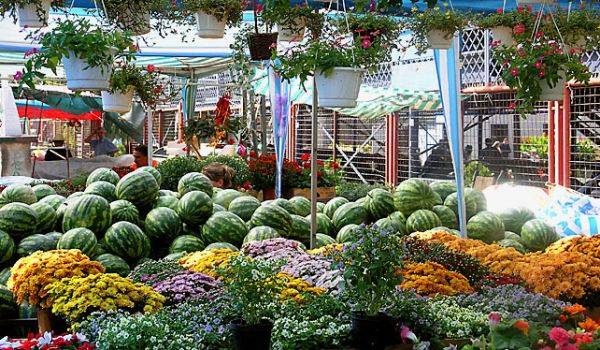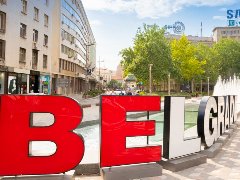
During the 30s and 40s of the XX century, today`s area around Cvetkova pijaca (Cvetko`s Market) was considered the periphery of Belgrade. Among the Serbian population in this part of the city used to live Czechs, mostly musicians, as well as several German and Hungarian families, and there were Jews and Russian immigrants. A lot of Kalmyks, who came here with Russian refugees after the fall of Imperial Russia, used to live in Cvetko`s neighbourhood before the World War II. Kalmyks are a Mongol tribe of the Buddhist religion from the Caspian Sea region and they were called Chinese in this area because of their looks.
The advantage for the inhabitants of this part of Zvezdara at that time was that the periphery Cvetko and the city center were connected by tram lines. The famous "Six" vehicle of the single track was going from Cvetko tavern down the street King Alexander. In "Lion" the trams were waiting for each other, and from there, they were going to the city on two tracks that led through Terazije to the monument to Prince Mihailo where there was a starting point.
At the beginning of the XX century the brick industry was developed in Zvezdara. That industry was supplying the builders from all over the city, and even parts of Serbia. In this place there used to be cultivated fields, alleys, Turkish cobbles and the way to Smederevo. Considered as far periphery, this part of the city was part where people were just passing in transit. Very soon, the place began to develop.
The whole place, market, and even a tram station bear the name of one man - Cvetko Jovanovic. At the late 19th century, Cvetko came from parts of the former Serbia which now belong to Macedonia. At first, he sold seeds and then he opened the grocery store near the Faculty of Law. When business developed, Cvetko bought land and opened han with house for horses for all those travelers who were caught by the night on this road.
Cvetko`s tavern was formed about 1902 and it was officially called "Vracarsko polje". In order to expand his business, Cvetko conducted electricity to that part of the city and laid the tracks for the famous tram "six".
With industrialization and urbanization that occurred after World War II, the appearance of the village, but also a way of life suffered irreversible changes. There is the history of great battles that have happened here, but without the great monuments to remind us on a daily basis. Large brick factory and industrial plants have disappeared and so has the way of family and social life typical of the era.
The only thing that has left is the view. As most people believe, the view from Zvezdara is the most magnificent one in entire Belgrade.








